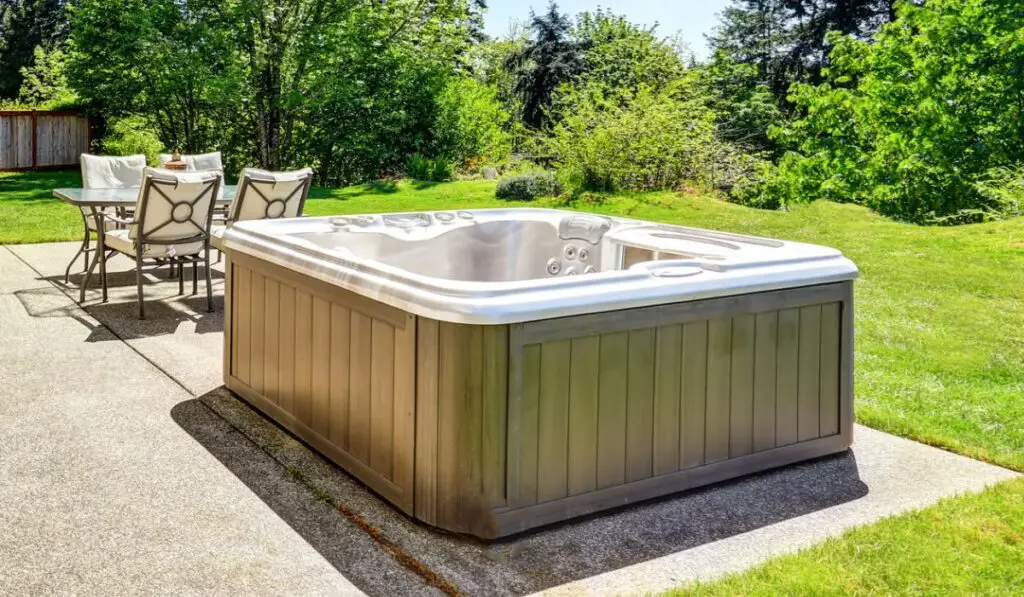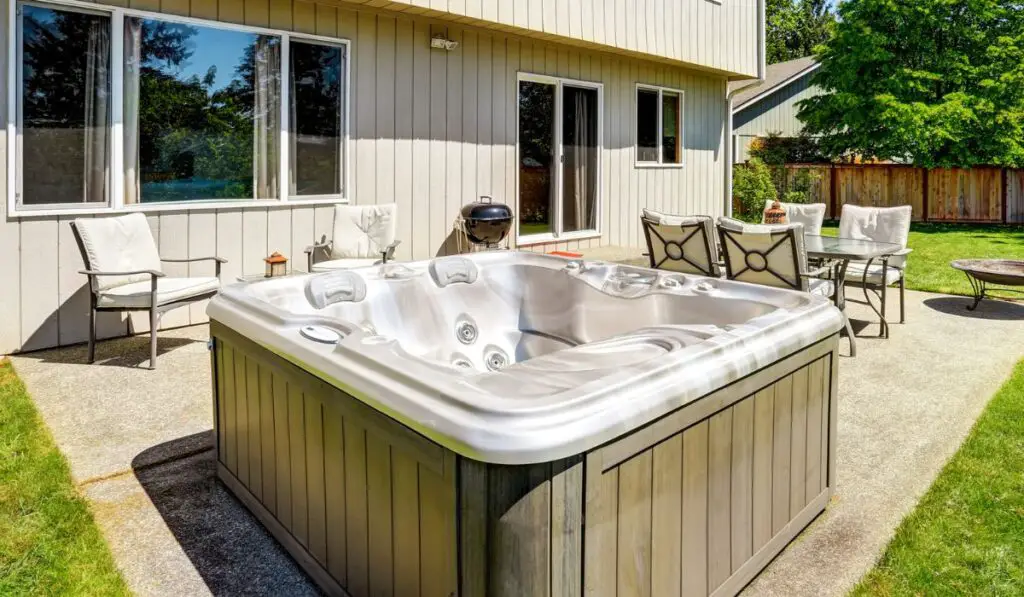Relaxing in a warm hot tub at the end of the day can be heaven on earth. When shopping for a hot tub to soak your tired body, you’ll notice differences in voltage as you browse. Some hot tubs are 110-volt and others are 220-volt. But what’s the difference, and is one better than the other?
The biggest difference between 110-volt and 220-volt hot tubs is the amount of power that they supply. 110V hot tubs can operate using a standard outlet, but 220V ones need special installation. While 110V hot tubs offer a better bargain and flexibility, 220V hot tubs feature stronger flow and jets.
Knowing the difference between 110V and 220V hot tubs can help you decide which one you want to invest in. Let’s look at some of the features of each type so you can make an informed decision when it comes to purchasing a hot tub.
What’s The Difference Between 110V and 220V Hot Tubs?

If you are trying to decide between purchasing a 110-volt or 220-volt hot tub, you may be wondering what the main differences are. Knowing how these hot tubs vary can save you a lot of time and money down the road.
The biggest difference between the 110V and 220V hot tubs is the amount of electricity that is being fed into them. A 110V hot tub uses a standard home outlet, which means it is being powered with about 15 amps. 220V hot tubs need more power, so they use a dedicated outlet specific to their installation.
And it’s hard to know what you need here, either, with many options like this 110V option and 220V option (both on Amazon) looking very similar to each other, with only a modest price difference. So what features are you gaining? Well, the 240 volt one will have unseen extra features, like the ability to heat up faster, and push water around harder, so that jets are more intense for instance.
Here’s a breakdown of the differences between 110V and 220V hot tubs:
Initial Cost
As with anything else, the cost of a hot tub changes depending on how many bells and whistles it comes equipped with. 110V hot tubs are standard, but 220V hot tubs tend to have more features.
110V hot tubs are typically more cost-effective than 220V ones, because you can usually buy one for less than $1,000. This means that if you are on a budget, this may be the best way for you to initially become a hot tub owner. In contrast, 220V hot tubs are usually priced within the range of $3,000 or more.
If you are looking for standard features with basic heating and massaging jets, then the 110V is probably the answer for you. However, if you have your heart set on having more than the standard features and more power, you may be better off getting the 220V hot tub.
Cost of Installation
Similar to the cost of the units overall, the cost to install the 110V and 220V hot tubs are quite different. This is due to the amount of power needed to operate the unit and supply everything that the hot tub comes equipped with.
110V hot tubs are often referred to as “plug and play” units because they usually don’t need any special wiring. Most of these hot tubs can plug into a regular 15 amp plug that most homes are wired with. This means 110V hot tubs can simply be purchased, put together, filled, treated with chemicals, and turned on in a matter of minutes.
A 220V hot tub, on the other hand, requires much more extensive work before you can begin using it. The hot tub needs more power than what a standard outlet will provide.
As a result, installation of A 220V hot tub requires a professional electrician to install a GFCI outlet that is hardwired into the main circuit box in your home. This can cost $500 or more.
Number of Jets
When it comes to the number of jets, there’s a huge difference between 110V and 220V units, and this again comes down to power.
For a 110V hot tub, industry standards come into play and dictate how the jets are dispersed. These units can have either nine smaller jets or six larger ones, although some manufacturers will divide these up in a variety of ways.
But because the 220V hot tub is wired differently, it can handle having much more jets. With more power coming in, the larger spas can handle the additional work overall.
Pros and Cons of a 110V Hot Tub
While a 110V hot tub may have less power, that doesn’t mean that there aren’t great reasons to purchase one. Here are the pros and cons of the 110v hot tub:
Pros:
- Easy installation
- Uses a standard outlet
- More affordable
Cons:
- Fewer bells and whistles
- Takes more time to heat up
- May not be able to use the jets and the heat at the same time
Pros and Cons of a 220V Hot Tub
Like the 110V hot tub, the 220V unit also has certain advantages and disadvantages that can make your decision-making process easier. If you are considering purchasing a 220v hot tub, you should first check out the various features that they come equipped with.
Here’s some pros and cons associated with 220V hot tubs:
Pros:
- More bells and whistles
- Heats up quickly and maintains heat
- More cost-effective over time
Cons:
- More expensive to purchase
- Needs to be installed by a professional electrician
- Costs more to install
How Can I Tell If My Hot Tub Is 110V or 220V?

Determining whether your hot tub is 110V or 220V is an easy thing to do once you know what to look for. For the most part, if your hot tub is plugged directly into a standard outdoor outlet, then it is likely to be a 110V unit. This means you should be able to unplug and plug it back in using the power cord.
If you cannot directly unplug the unit without tripping the circuit breaker, then you most likely have a 220V hot tub. This is because this type of unit has to be installed by an electrician and grounded to your home’s circuit breaker.
Can You Run a 220V Hot Tub on 110V?
When it comes to running a 220V hot tub, to do so effectively (or even at all), you’ll have to have it hardwired directly into a disconnect box that then runs to the circuit breaker in your home. This means that you cannot just plug it into a standard 15 to 20 amp GFCI plug.
This means that you cannot run a 220V hot tub on 110V because the unit does not typically come equipped with a plug to do so. While you can convert some 110V hot tubs to run on 220V, you cannot go the other way around.
Final Thoughts on 110V vs 220V Hot Tubs
Both110V and 220V hot tubs can provide you with a relaxing soak. The choice between the two comes down to what you are looking for in a hot tub as a whole.
If you are looking to stay on a budget and want more flexibility, then the 110V hot tub may be the one for you. However, if you are looking for more bells and whistles and are not planning to move it at all, then the 220V hardwired hot tub is more likely your style.
